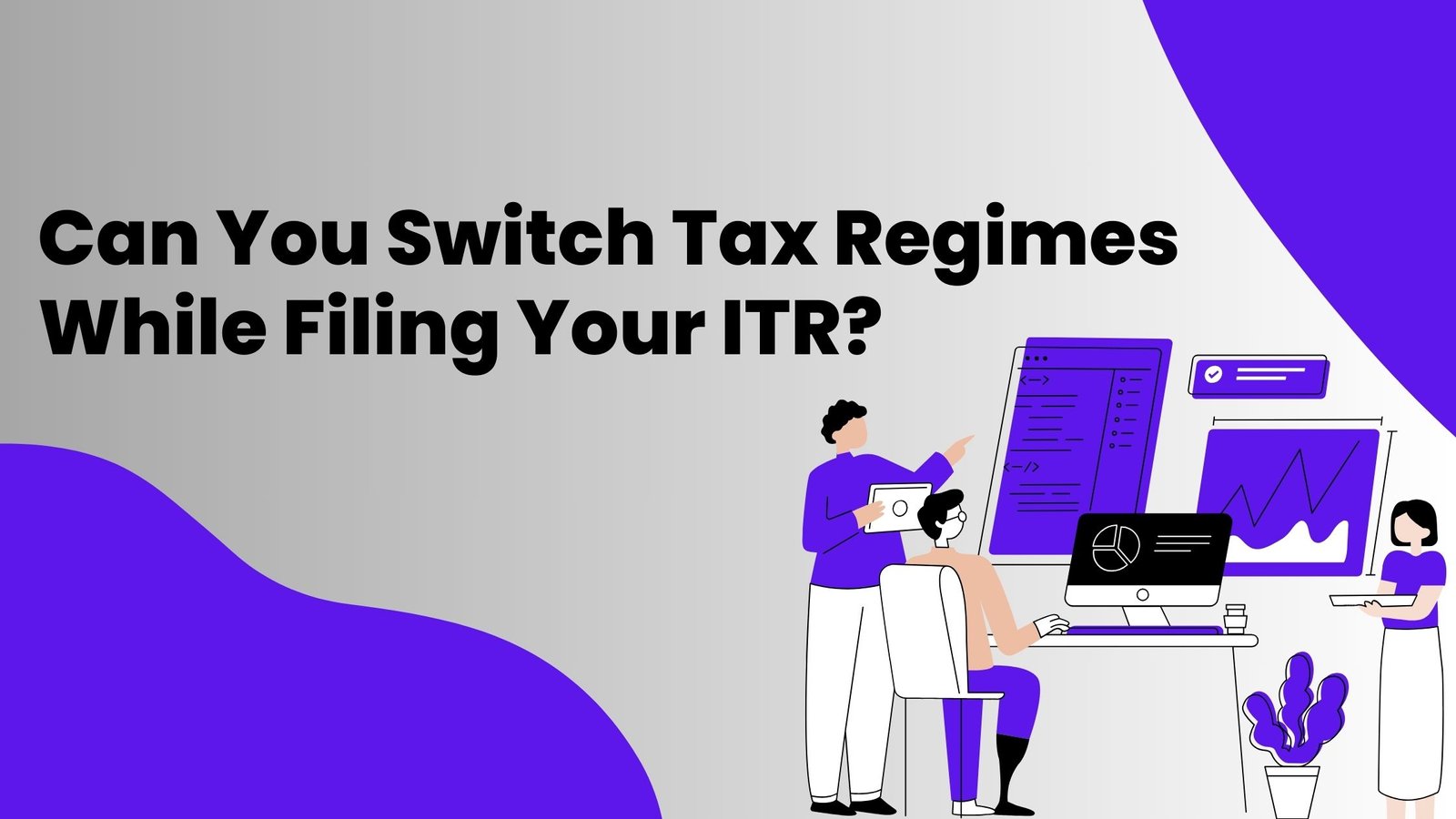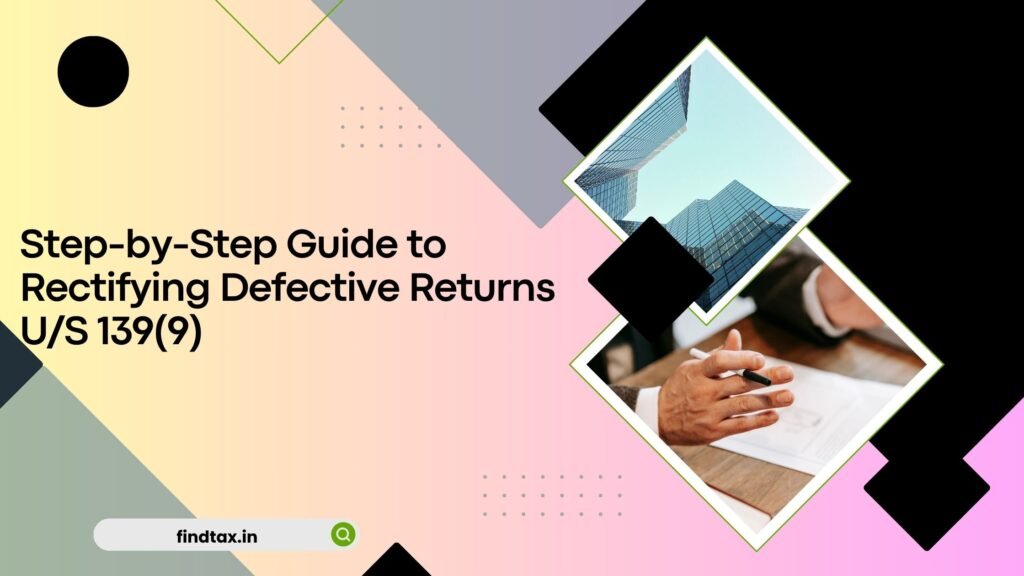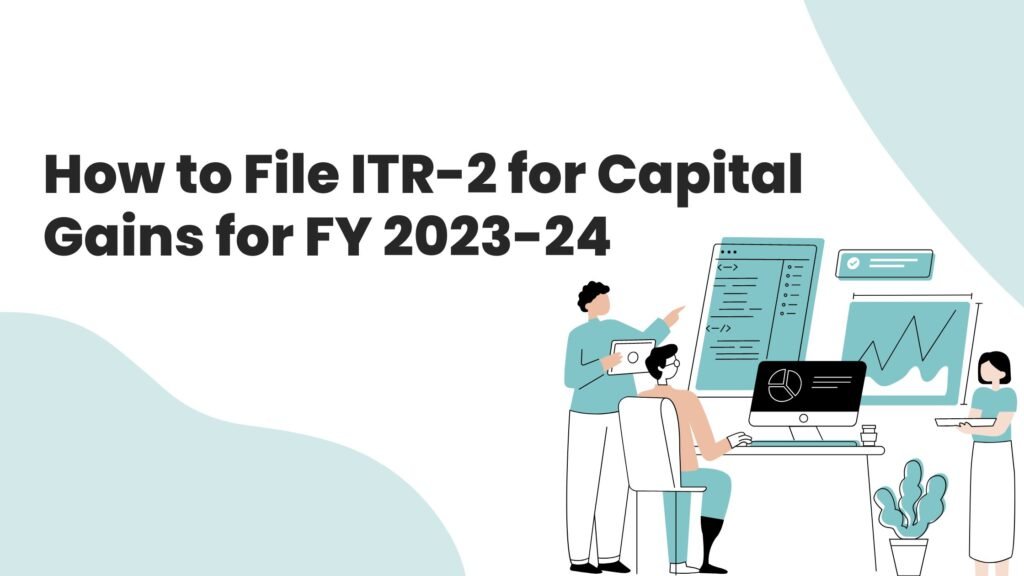
As the deadline for filing your Income Tax Return (ITR) approaches, you may be considering whether it’s possible to switch between the new and old tax regimes. The answer is yes, you can. This flexibility was introduced with the new tax regime that began in Budget 2020 and was updated again in Budget 2023 and again in July Budget 2024. Here’s a detailed guide on how you can navigate these tax regimes and make the best choice for your financial situation.
Old Tax Regime
Under the old tax regime, taxpayers have access to various exemptions and deductions for expenses such as investments, insurance premiums, and housing loans, as outlined under Section 80 and other related sections. This regime is generally beneficial for those with significant deductions and expenses that can reduce their taxable income.
New Tax Regime
The new tax regime was introduced in July Budget 2024. It offers lower tax rates and an increased basic exemption limit from ₹2,50,000 to ₹3,00,000. Standard Deduction has been increased to ₹75,000 from ₹50,000. However, this regime allows fewer deductions—primarily Section 80CCD(2), Leave Encashments etc., for individuals.
The above basic exemption limit of 3,00,000 is for Individuals & HUFs aged up to 60 years.
For Senior Citizens aged above 60 years and up to 80 years the basic exemption limit is 3,00,000.
For Super Senior Citizens the basic aged above 80 years, the exemption limit is 5,00,000.
Basic exemption limit for the old tax regime is the same as earlier i.e., 2,50,000.
Switching Tax Regimes While Filing Your ITR
The new tax regime is the default option for taxpayers. If you do not actively choose between the two regimes, your taxes will be calculated based on the new tax regime. However, you have the option to switch to the old tax regime before the due date filing original return for the relevant assessment year (AY).
Individuals can switch between tax regimes each year, while taxpayers with business or professional income can only switch once in their lifetime.
How to Change Your Tax Regime While Filing Your ITR
Changing your tax regime is straightforward:
- For ITR-1 and ITR-2 Forms: You will be asked, “Do you wish to exercise the option u/s 115BAC(6) to opt out of the new tax regime (default is ‘No’)?”. Selecting ‘Yes’ will switch you to the old tax regime, while ‘No’ will retain the new tax regime.
- For ITR-3 and ITR-4 Forms: To switch from the new to the old tax regime, you need to file Form 10-IEA before the due date (e.g., July 31, 2024).
Things to Consider When Switching Tax Regimes
Switching tax regimes can significantly affect your tax liability and basic exemption limits. Before making a decision, keep these points in mind:
- Understand Each Regime: Familiarize yourself with the details of both tax regimes, including available deductions and tax rates. This will help you make an informed choice.
- Evaluate Tax Liability: Calculate the potential tax liability for each regime based on your income and available deductions. Use an income tax calculator to assist with this evaluation.
- Impact on Investments and Savings: Consider how switching regimes might affect your current investments and financial planning. Some investments that qualify for deductions under the old regime may not be eligible under the new regime.
- Documentation: Ensure you have all necessary documentation to support your income, deductions, and exemptions when filing your return.
- Tax Planning: Reflect on how switching regimes aligns with your long-term financial goals and future tax planning strategies.
Conclusion
Switching between tax regimes is indeed possible and can be advantageous depending on your financial situation. Consider your tax planning, long-term financial goals, and current investments before making a switch. For a hassle-free filing experience, platforms like FindTax can help streamline the process and select the most beneficial tax regime for you.
Frequently Asked Questions
Q1: Can I change my tax regime while filing my ITR?
Yes, you can switch your tax regime while filing your ITR. You have the flexibility to choose the tax regime that is more beneficial to your financial situation.
Q2: I have chosen the new tax regime in my company, can I file my ITR in the old regime?
Yes, even though we have opted for the new tax regime in your company, you will have an option to switch to the old tax regime (vice versa) at the time of filing your ITR if you file before the due date of filing the original return.
Q3: I have filed my ITR in the new tax regime, can I switch to the old tax regime for the same year?
It depends on when you are filing your returns, to take this benefit we need to file the revised return within the due date of filing original return.
Q4: What happens if I choose the new tax regime?
Opting for the new tax regime provides an increased basic exemption limit of ₹3 lakhs but offers fewer deductions compared to the old regime. This regime is advantageous for individuals with fewer deductible investments.
Q5: Which form should I file to switch to the old tax regime?
To switch from the new tax regime to the old tax regime for the assessment year 2024-25, you should file Form 10-IEA. This is not applicable for salaried employees, this is applicable only for those having income from Business or Profession.
Q6: What deductions are available under the new tax regime?
Under the new tax regime, you can avail of deductions under Section 80CCD(2), Leave encashments etc.,. These are limited compared to the old regime.
Q7: Can I switch between tax regimes every year?
Yes, you can switch between the old and new tax regimes each year if you are an individual. However, taxpayers with business or professional income can only make this switch once in their lifetime.
Contact us to file your ITR.


Scenario for Salaried Individual (AY: 2024-25):
1. Not filed ITR-1 by 31-Jul-2024.
2. Want to file now, but e-filing site of Income Tax is not allowing to file under Old Tax Regime, only allowing New Tax Regime.
3. On choosing New Tax Regime, applicable taxes are coming very high.
4. Any suggestion to select Old Tax Regime to lower the applicable taxes.
5. Or should wait for Notice from Income Tax and then file ITR on Old Tax Regime.
Seeking a workable suggestion on immediate basis, please suggest.